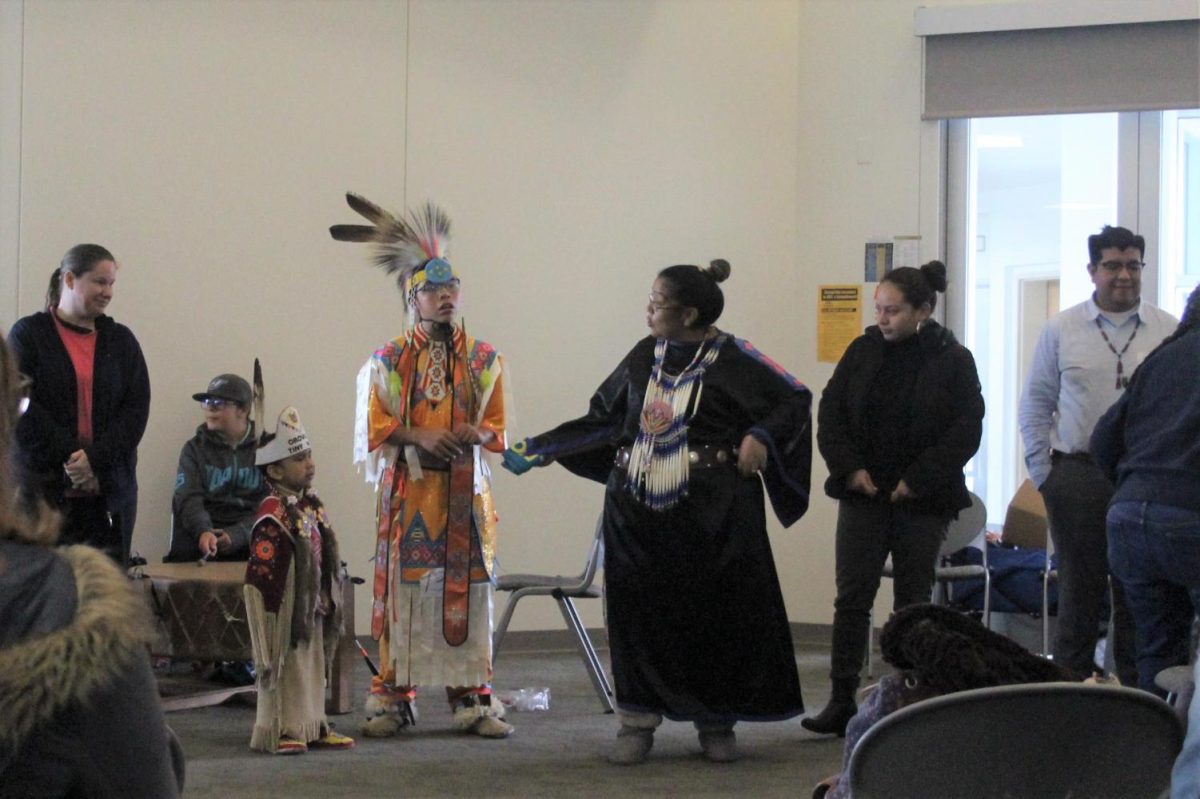The Native American Heritage Resource and Education fair showcases culture through ethnic performances
The Rocha family performs for attendees of the Resource and Education Fair on Nov.15, the second event during Native American Heritage Week.
The Resource Education Fair was the second event held during the annual Native American Heritage Week on Nov. 15, and highlighted ethnic groups and education opportunities.
There were performances from different cultures that the faculty had invited, such as the Rocha family, Ohana Dance Group of Sacramento and Nico Ihimaera of New Zealand.
“One of the most important, significant aspects of the event held on this campus is that this used to be a Native American land at one time,” Jason Newman, president of the faculty union, said. “This event takes place on Indian land and local Native community members come here and participate.”
The transfer center invited Northern California Universities, such as Sacramento State, UC Merced, UC Davis, Chico, Fresno, Santa Cruz and California State Parks. The representatives provided educational resources and information to the Native American community.
The Rocha family was the first to perform. Frances Rocha, the mother, had her six children perform their ritual dances in order: Old Style Fancy, Northern Traditional, Women Gingie, Grass Dance, International Tribal and Round Dance.
They invited everyone to the round dance in one big circle to dance and embrace what it’s like to be a part of tribal dance.
“That was so awesome to be a part of, you see all kinds of people; white, black, hispanic, the Native American-like Asian descendants just dancing together,” Anthony Lollis, 23, a communications major, said. “We were just being together as one.”
The next group was the Ohana Dance Group, led by Kuma Pat, one of the performers. They gave a descriptive lecture about their performance, and how singing and dancing is a way to call for their ancestors.
“We always sing to our ancestors,” Pat said.
They were dressed with colorful leis, flowers, kukui nut-shell necklaces, and they brought instruments such as ’Uli ’Uli (feathered gourd rattles), Ipu (hula percussion) and Pu’ilis (bamboo sticks).
During one of their performances, they invited everyone to learn how to hula and use Kala’au (drum sticks) separately. Learning to control the rhythm of your hips while performing in one position can be a workout, but it’s a learning process for the audience to adapt to.
For the final performance, Nico Ihimaera provided his background on what his ethnicity is, and what it means to be proud of your race and learn the history of worshipping your ancestors.
He dressed up as a Maori warrior and brought weapons that are used for battle and tools, such as Wooden Wahaika, Taiaha (spear) and Pouwhenua (staff). He painted his face to represent a tattoo called “Ta Moko” and how it presented an undeniable declaration of who someone is.
For his finale, he performed a traditional war cry called the “Haka,” a posture dance performed with a group, with vigorous movements and stomping the feet in rhythm, along with shouting Maori language.
“The Haka is a message, but it also can be used for other varieties or events, such as weddings, ceremonials or just any event,” Nico said. “We all have the spirit of our ancestors in us, and how learning about the culture and history of our families or tribes to know how we came upon the land that we have today.”
The performances and lectures from each culture had so much history within them, and being exposed while learning the messages behind them values appreciation and respect.
“In November, across the nation, Congress has dedicated November to be Native American Heritage Month,” Newman said. “Like African-Americans, women and other groups Congress has designated a certain month for public institutions to embrace and to increase their diversity in our community.”

